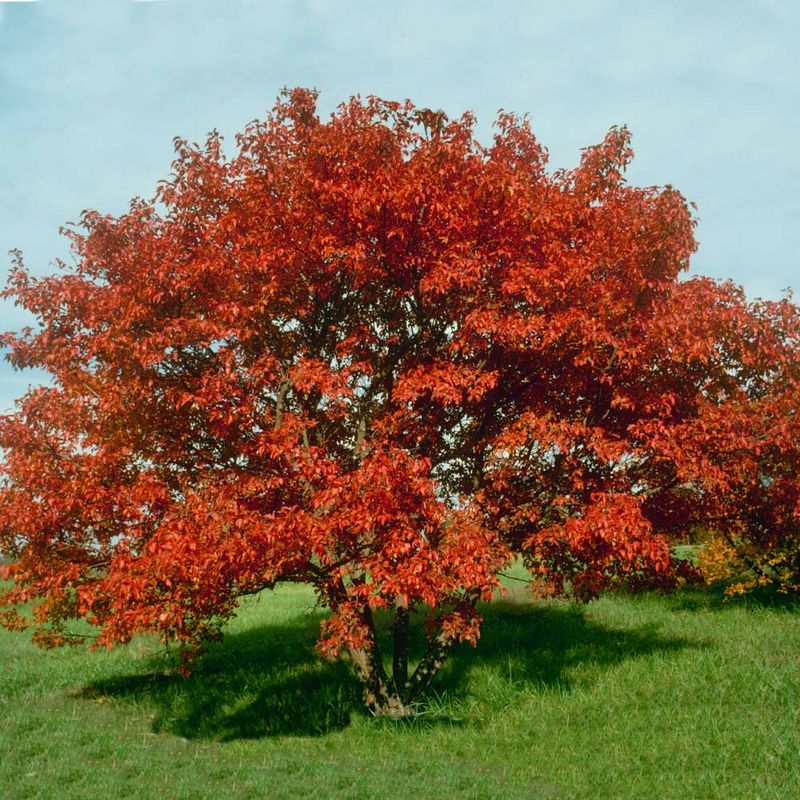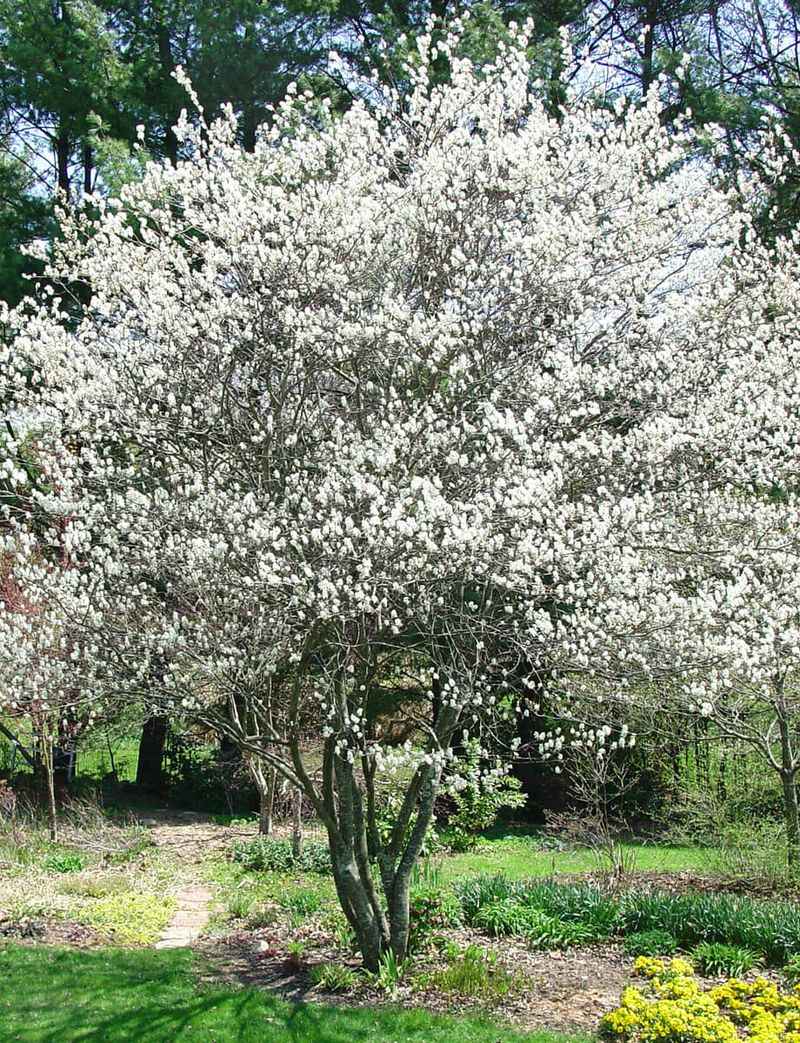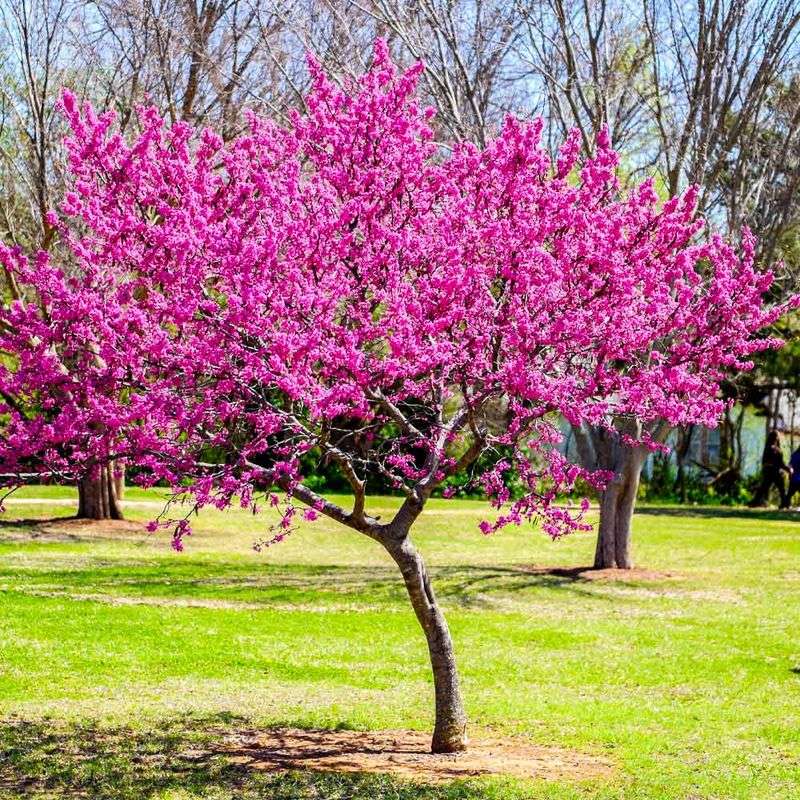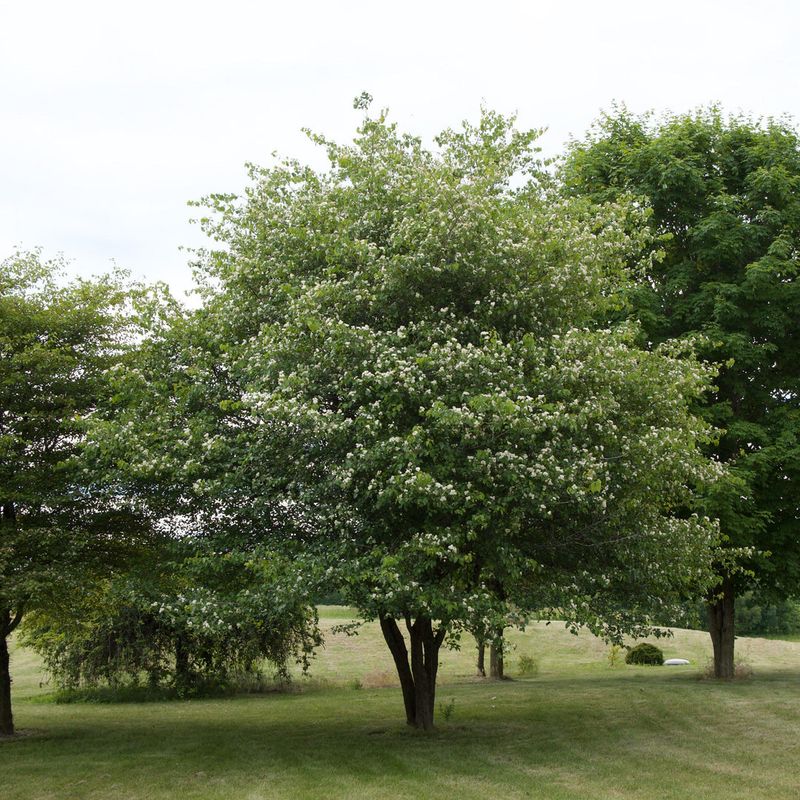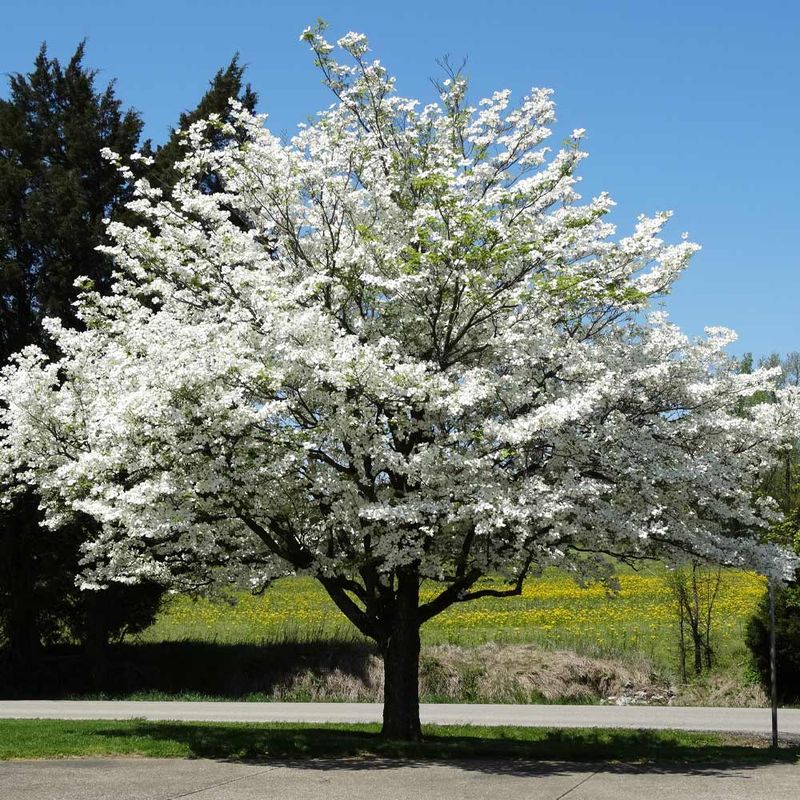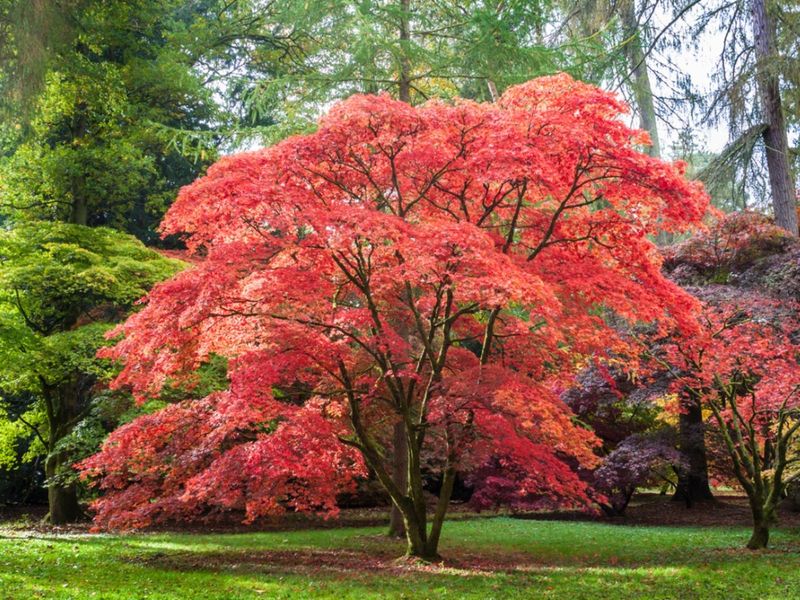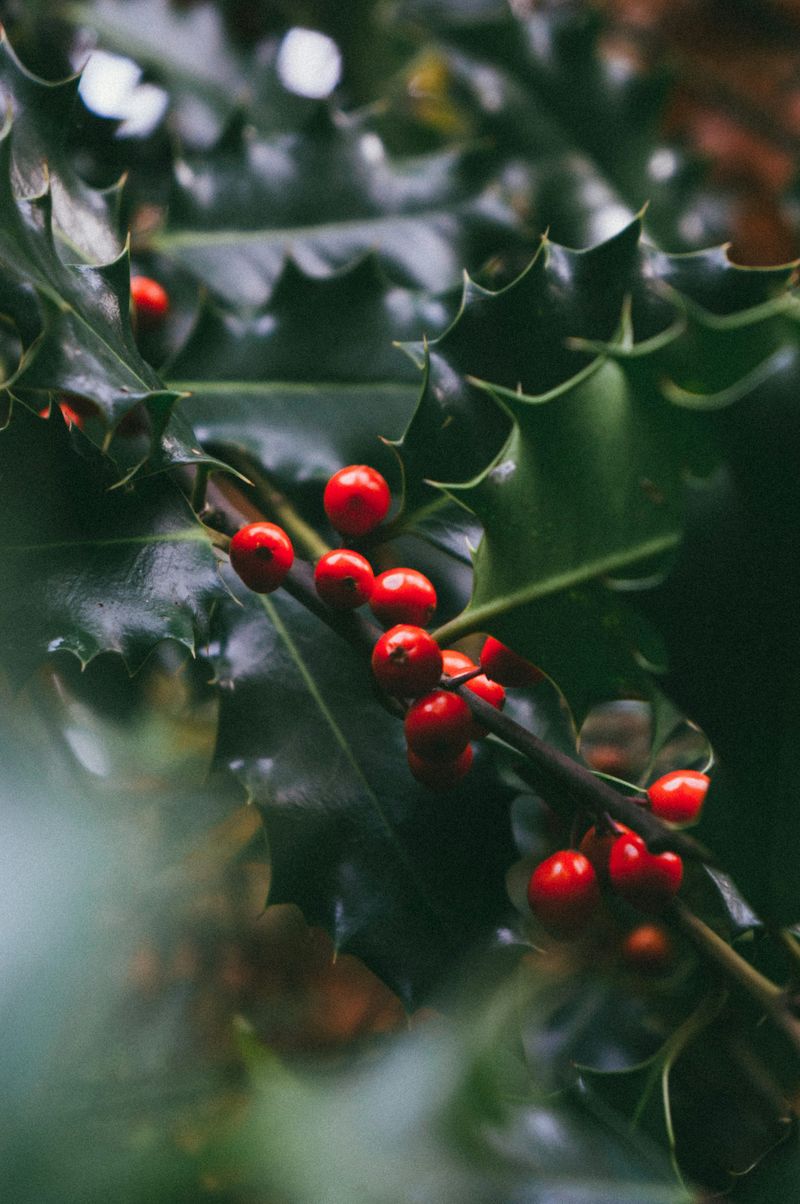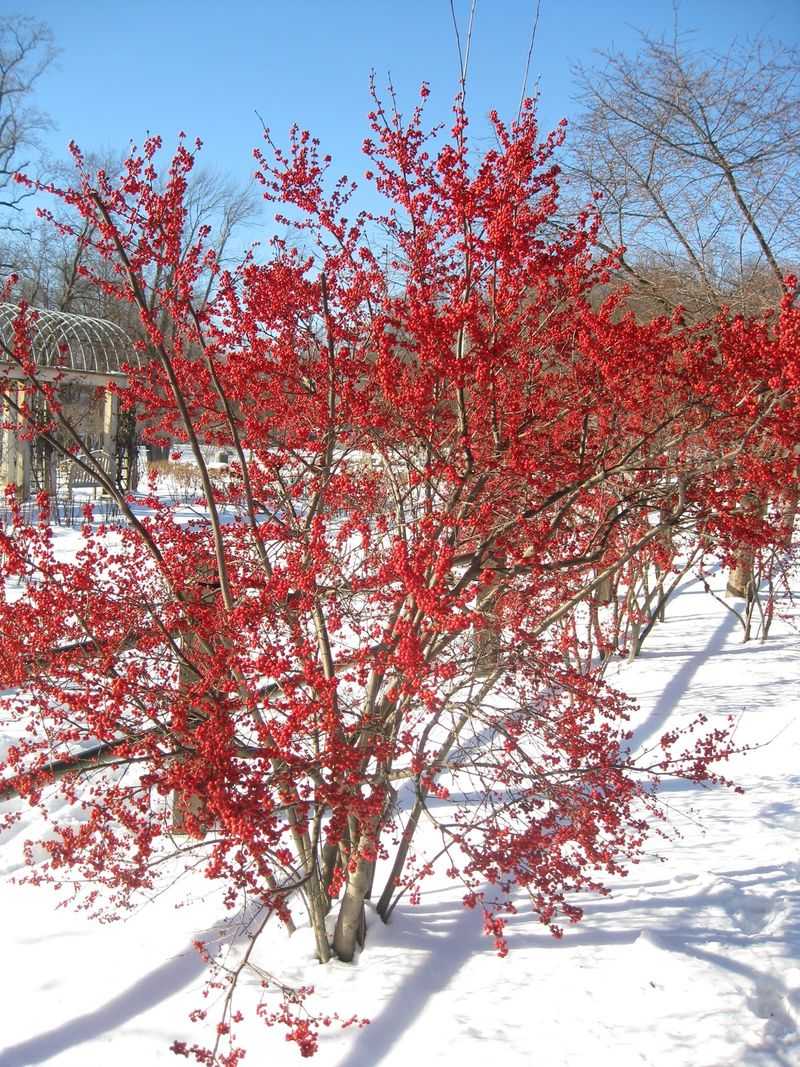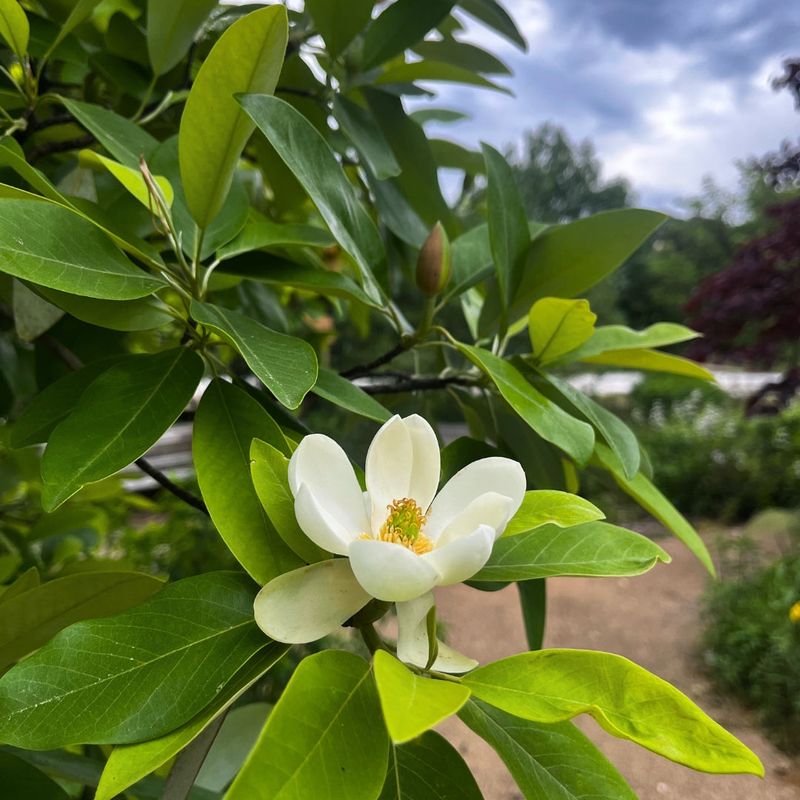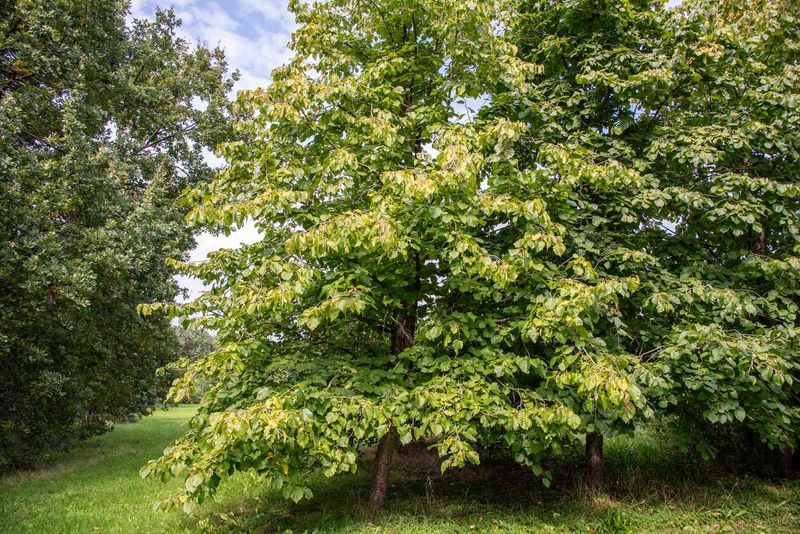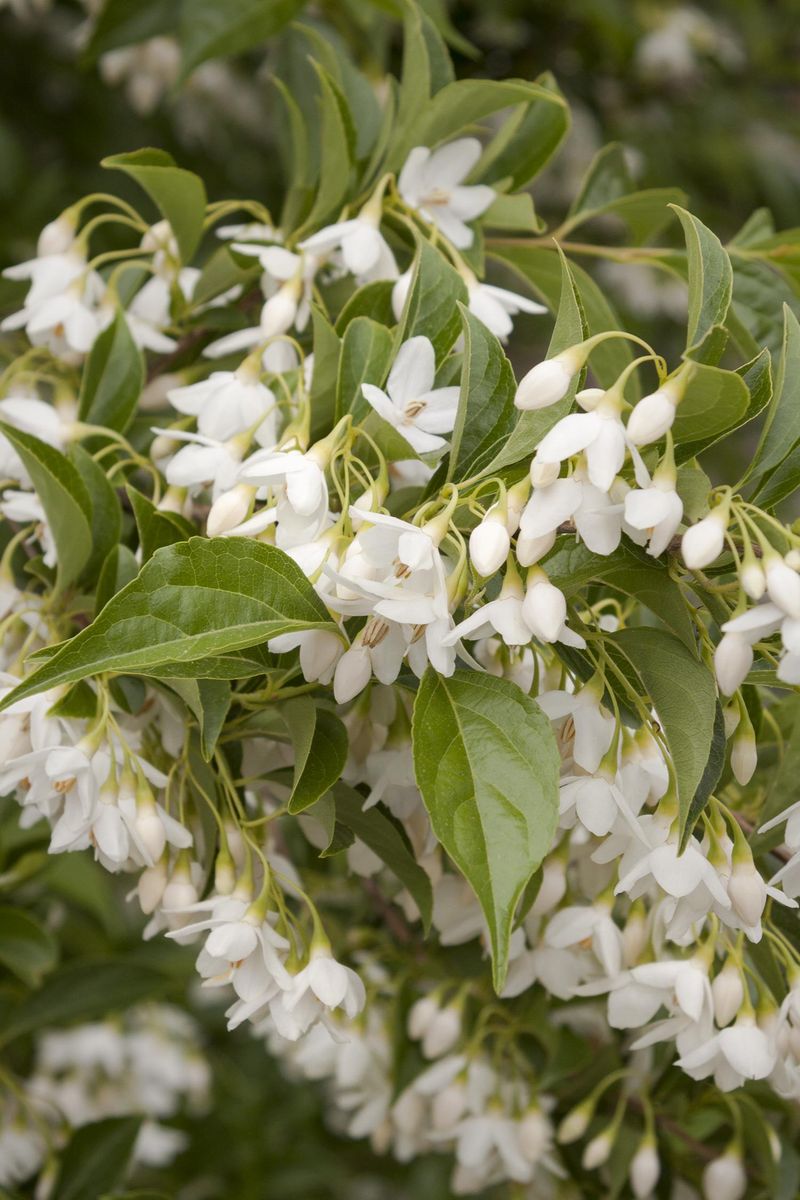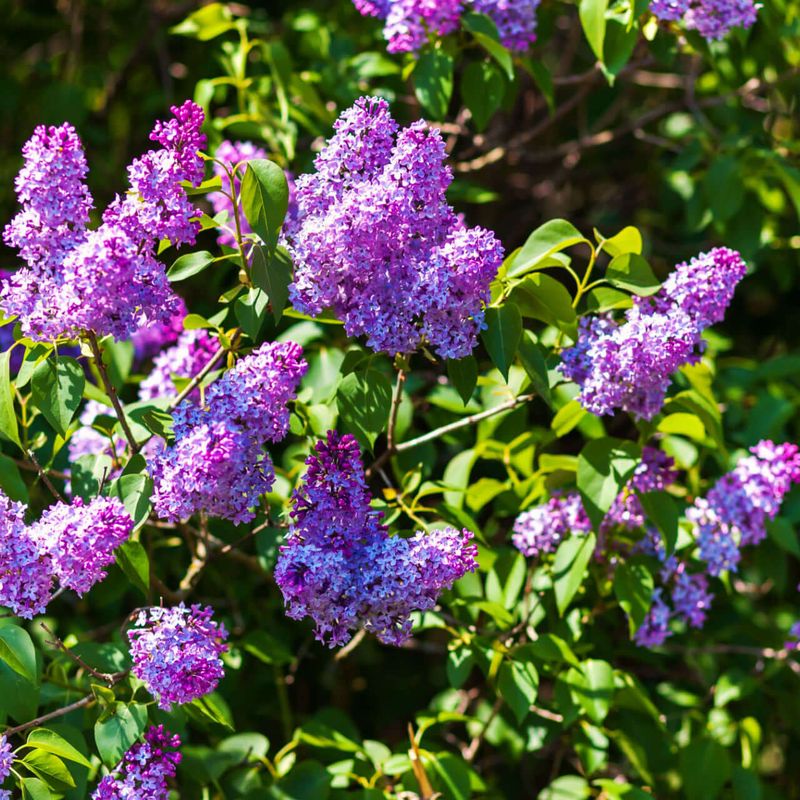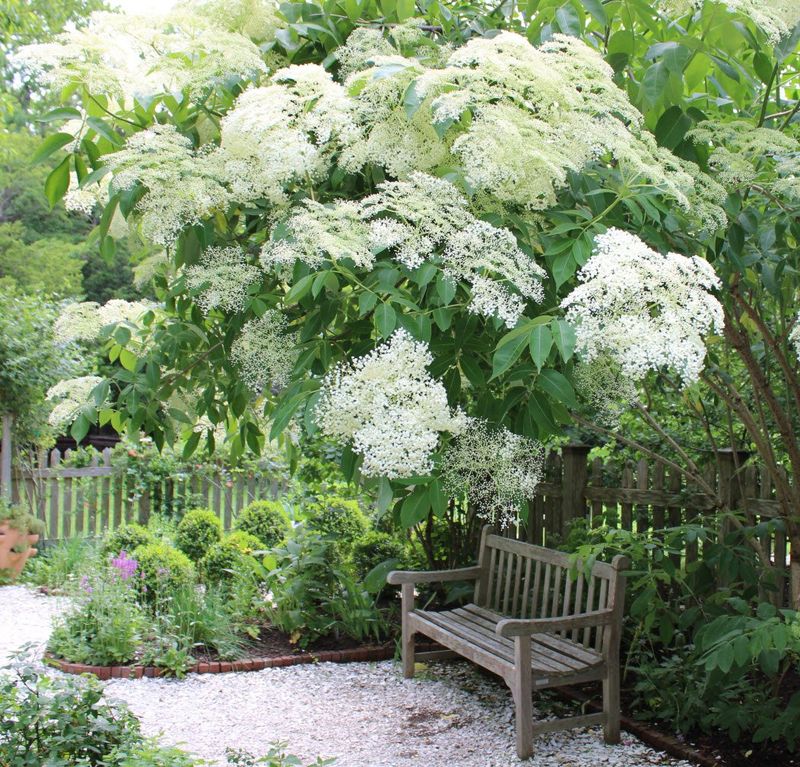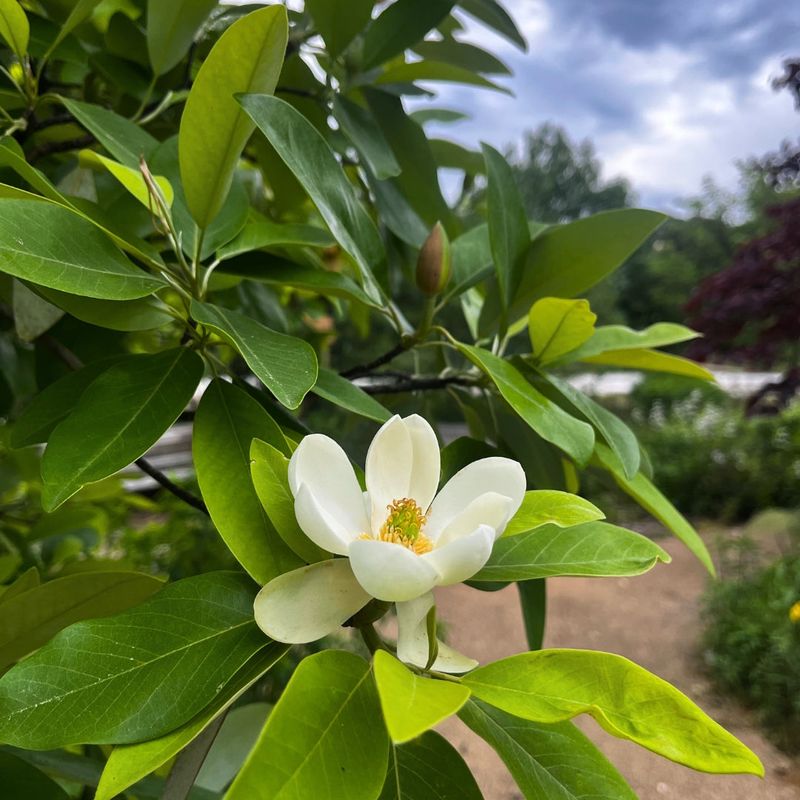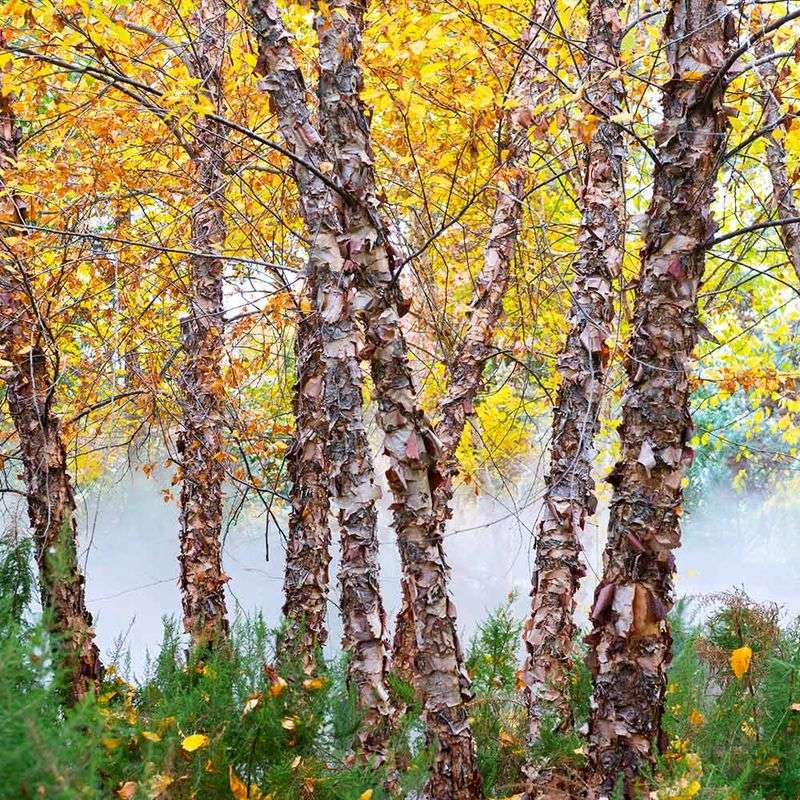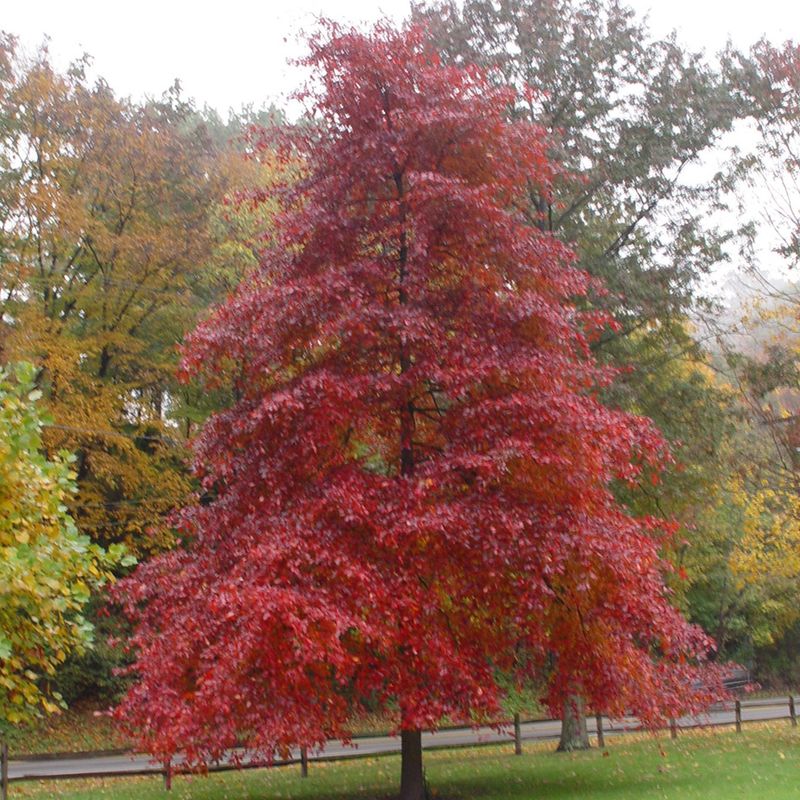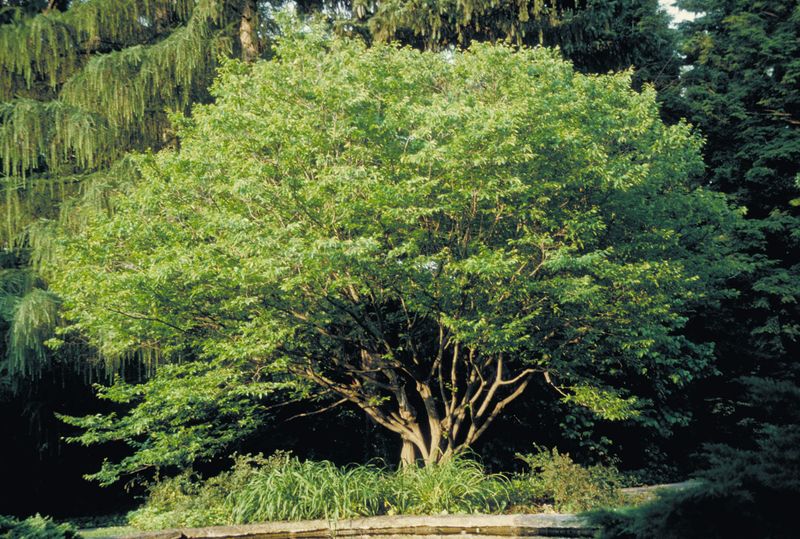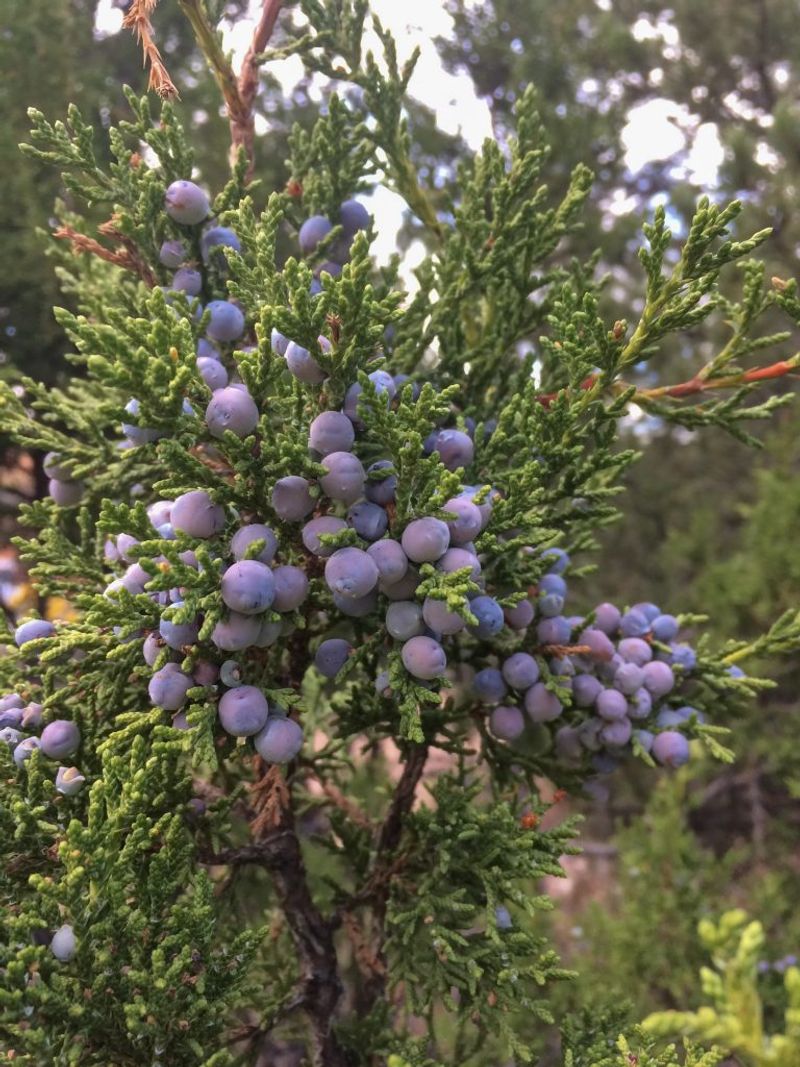Gardening in heavy clay soil can feel like trying to carve your way through a lump of clay! But fear not. There are small trees that thrive in these tough conditions.
These resilient species don’t mind getting their roots dirty and will bring charm and character to your garden. Trust me, they’re the unsung heroes, ready to turn your clay-heavy patch into a green retreat.
I remember feeling doubtful at first, but these little trees proved to be game-changers.
1. Amur Maple
Imagine a tree that sets your garden ablaze with its fiery autumn display. Say hello to the Amur Maple. This compact beauty, with its stunning red foliage, is a showstopper.
Its adaptability to various soil types, including heavy clay, makes it a gardener’s dream. Amur Maple can tolerate urban pollution and poor soil drainage.
Its shallow root system doesn’t mind the dense texture of clay, offering a burst of color without the fuss. Ideal for small spaces, it adds a refreshing touch without demanding much.
2. Serviceberry
Spring arrives with a white floral explosion. Meet the Serviceberry. This delightful specimen cloaks itself in an array of blossoms, welcoming the season with open branches.
Its edible berries attract birds and nature lovers alike. With roots that venture into clay like a seasoned explorer, the Serviceberry is perfect for those challenging garden spots.
It handles poor drainage with ease, offering delicate beauty without a complaint. Its compact size ensures it fits gracefully into any garden, large or small.
3. Crabapple
Pink petals flutter like confetti during spring. That’s the Crabapple for you. This tree doubles as a decorative feature and a wildlife haven with its blossoms and fruit.
Crabapples are not picky about their home. Their resilience is evident in their ability to handle heavy clay, standing firm against the odds.
They invite bees and birds, turning your garden into a miniature eco-system. A Crabapple is more than just a tree; it’s a fragrant festival of life.
4. Redbud
Purple-pink blooms herald the coming of warmer days. Enter the Redbud. This tree paints a striking picture when in full flower, and its heart-shaped leaves add to the charm.
Redbuds have a knack for settling in less-than-ideal soils, including clay. Their tenacity makes them suitable for a variety of climates, and their lively display is a reward for any gardener.
They are robust companions in the garden, thriving where others might falter, and offer seasonal splendor without hesitation.
5. Hawthorn
White blossoms and red berries create a dramatic show. Say hello to Hawthorn. This tree stands out with its thorny branches and lively display, offering more than just aesthetic value.
Hawthorn trees are tough cookies in the plant world. They handle clay soil like seasoned professionals, offering beauty and resilience.
Their berries are a feast for birds, ensuring your garden is always teeming with life. With a Hawthorn, your garden gains an ally in beauty and biodiversity.
6. Dogwood
Graceful blooms that seem to dance in the breeze. That’s Dogwood for you. This tree’s flowers and striking bark provide visual interest year-round.
Dogwoods are unfazed by the clutches of clay soil. They establish themselves firmly, offering beauty throughout the seasons.
Their flowers are magnets for pollinators, turning your garden into a lively hub of activity. A Dogwood adds a touch of elegance and charm, proving that even the toughest soils can nurture something beautiful.
7. Japanese Maple
Delicate leaves that resemble lace in nature’s tapestry. Welcome the Japanese Maple. Its intricate foliage is a visual masterpiece.
Japanese Maples are well-suited to the challenges of clay soil. Their graceful appearance belies their tough nature, making them a perfect addition to any garden.
They offer an artistic flair with minimal fuss, adding color and form. These trees are a testament to resilience, handling dense soils with ease and elegance.
8. Holly
Glossy leaves that catch the eye and berries that add a splash of color. That’s the Holly. This evergreen offers year-round interest with minimal maintenance.
Holly trees are unbothered by the challenges of clay-heavy lands. Their robust nature allows them to flourish where others might hesitate.
The berries invite a variety of birds, making your garden a winter sanctuary. With its classic appeal, Holly is both a centerpiece and a wildlife haven.
9. Winterberry
Winter landscapes lit up by clusters of red berries. Meet the Winterberry. This deciduous holly species stands out in the cold months, offering a lively splash against the bare branches.
Winterberries thrive in soggy soils, making clay their playground. Their tolerance for wet feet and heavy ground ensures they flourish where others fail.
The berries are a feast for birds, turning your garden into a lively spot even in winter’s grasp. Winterberry keeps the garden colorful when most plants take a backseat.
10. Magnolia
Large blooms that look like nature’s porcelain creations. Behold the Magnolia. This tree’s fragrant flowers make it a garden favorite.
Magnolias are surprisingly unfazed by heavy clay soils. Their stunning blossoms and grand foliage create a commanding presence in any landscape.
With an ability to adapt to less-than-ideal conditions, they offer elegance and grace, proving that even challenging soils can’t hold back their beauty. A Magnolia in bloom is truly breathtaking.
11. Hazel
Catkins sway gently like nature’s own wind chimes. That’s the Hazel. This tree is as productive as it is ornamental, providing nuts and beauty.
Hazel trees manage heavy clay with aplomb, offering both aesthetic and practical value. Their nuts are a treat for wildlife and humans alike, making them a versatile choice.
These trees stand firm against challenging conditions, delivering year-round interest with minimal fuss. Hazel is a gift that keeps on giving, both visually and practically.
12. Snowbell
Snowy blooms cascade gently, creating a serene scene. Meet the Snowbell. This tree’s delicate flowers add a touch of elegance to any garden.
Snowbells handle clay soil like seasoned pros, offering a graceful display that defies its tough environment.
Their ability to thrive in dense soils makes them a reliable choice for gardeners seeking beauty and resilience. With Snowbell, your garden gains a sophisticated charm that stands resiliently through the seasons.
13. Lilac
Clusters of fragrant blooms announce themselves with a sweet symphony. That’s the Lilac, ready to enchant any garden with its delightful perfume.
Lilacs are unperturbed by clay’s grasp. Their fragrant flowers create a sensory oasis, offering an aromatic escape.
These bushes are robust and easy to care for, managing heavy soils with grace. Lilacs bring both color and fragrance, ensuring your garden is a feast for the senses, even in challenging conditions.
14. Elderberry
Dark berries and white flowers create a striking contrast. Welcome the Elderberry. This bush is both a culinary delight and a visual treat.
Elderberries are undeterred by the heavy embrace of clay. Their berries are renowned for their health benefits, making them a practical addition to any garden.
They withstand poor drainage, offering both beauty and utility. With Elderberry, your garden becomes a pantry and a sanctuary, providing sustenance and splendor alike.
15. Sweetbay Magnolia
Fragrant flowers that seem to whisper secrets on the breeze. Enter the Sweetbay Magnolia. Its creamy blossoms and glossy leaves capture the senses.
Sweetbay Magnolias are clay soil connoisseurs, thriving where others might struggle. Their elegance is matched by their robustness, offering beauty and resilience in equal measure.
These trees add a touch of the exotic to any landscape, proving that even the most challenging soils can nurture something extraordinary.
16. River Birch
Bark that peels like nature’s paper and leaves that rustle in the breeze. Meet the River Birch. This tree’s unique texture adds intrigue to any garden.
River Birches are unfazed by clay’s hold, thriving in wet and compacted soils. Their ability to flourish in such conditions makes them indispensable for challenging landscapes.
With their striking appearance and adaptability, River Birch turns any garden into a scene of natural wonder, offering both beauty and resilience.
17. Black Gum
Leaves that transform the garden into a painter’s palette come autumn. That’s the Black Gum for you. This tree’s glossy leaves and fall color are show-stoppers.
Black Gums handle clay soil like seasoned gardeners, offering a spectacular display with minimal fuss. Their adaptability to various conditions makes them a reliable choice for any landscape.
With its fiery fall foliage, Black Gum ensures your garden is a canvas of color, regardless of the soil beneath.
18. Hornbeam
Strong trunks that stand like nature’s columns, adorned with serrated leaves. Enter the Hornbeam. This tree’s robust presence offers both form and function.
Hornbeams are adept at conquering clay soil, providing a sturdy structure to any landscape. Their resilience against adverse conditions makes them a gardener’s ally.
With its architectural elegance, the Hornbeam is more than just a tree; it’s a statement piece, thriving where others might struggle.
19. Spicebush
Yellow blooms that light up the landscape like little suns. Meet the Spicebush. This native shrub offers aromatic foliage and flowers.
Spicebushes are well-suited to handle heavy clay soils. Their cheerful disposition attracts a variety of pollinators, ensuring your garden buzzes with life.
With its adaptability and charm, Spicebush is a delightful companion in any garden, providing both beauty and a habitat for butterflies.
20. Juniper
Needles so distinct they create their own texture, accompanied by berries that add a subtle touch. That’s the Juniper. This evergreen’s unique profile is a garden favorite.
Junipers are undaunted by the demands of clay soil, offering year-round greenery and structure. Their hardy nature makes them perfect for low-maintenance landscapes.
With their serene presence, Junipers ensure your garden remains lively and green, providing a backdrop of calm amidst the seasonal changes.


